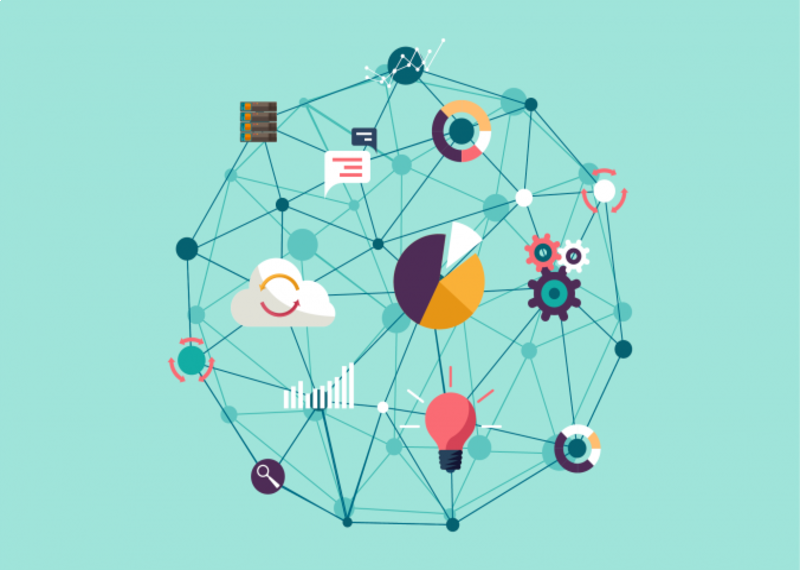What is data-driven marketing?

Data-driven marketing is the optimisation of brand communication based on customer information. Data-driven marketers use customer data to map customer needs, desires and future behaviour. Such insights help develop personalised marketing strategies to maximise return on investment (ROI).
What is data-driven marketing?
Data-driven marketing is the approach of optimising brand communications based on customer information. Data-driven marketers use customer data to predict their needs, desires and future behaviours. Such insight helps develop personalised marketing strategies for the highest possible return on investment (ROI).
But how is data driven marketing different from the traditional marketing?
To understand the difference, we must revisit the original premise of marketing.
In its simplest form, marketing has always focused on two objectives. First, to discover customers’ needs and desires. And then, using that insight to deliver what customers wanted to buy.
In practical terms, this has always meant:
- Gaining a deep understanding of the target audience first, then,
- Identifying and anticipating customer needs, and finally,
- Designing strategies to deliver goods promising to solve those needs.
Traditional marketing teams used a combination of two factors to achieve those objectives:
- Market studies available at the time, and
- Their assumptions about the target audience.
Unfortunately, this approach often meant trial and error. Companies had to launch many strategies to find the one capable of achieving their goals.
In contrast, data-driven marketing allows marketers to connect with customers at the right time. And with the right offering, at that.
But the benefits of using the data go beyond just improving communications. Modern marketing teams use customer insights to:
- Personalise the customer experience,
- Target well-defined marketing segments, and
- Get new customers.
- With the data, brands can also measure and improve their strategies in real time.
The benefits of using big data in marketing
So far, we discussed how big data helps marketers make better decisions. Decisions that, in turn, deliver far greater results, and do it faster.
And it works. 2 out of 3 of the leading marketers admit that data-based decisions beat gut instinct.
But marketers can benefit from the data in other ways too. For example:
#1. Data helps to gain better clarity about the target audience.
Any information about customers allows marketers to gain a laser-sharp understanding of their target audience. Insights from the CRM, for example, can increase a marketer’s ability to predict customer behaviour further.
The result? Marketing campaigns that guarantee reaching customers with the right message at the right time.
#2. Data offers the ability to build stronger connections with potential customers
With data, marketers can build much better connections with their audience. What’s more, they can do so at a scale too.
As Tom Benton, the CEO of the Data and Marketing Association Points out in his forbes article:
“The sheer amount of data from a near-infinite combination of media, devices, platforms and channels allows marketers the opportunity to deliver 1-to-1 customer experiences at a massive scale. If these are leveraged adeptly, a business with a million customers can deliver an experience just as tailored as a business with a dozen customers.”
For example. A real-time campaign data would help a marketer adjust it to match a customer’s engagement.
As a result, they could deliver a campaign that matches the audience’s expectations continuously.
#3. Uncover the best channels for promotion
Data could reveal not only a target audience’s preferences. It could also suggest what channels a brand should use to engage their audience now and in the future.
Such insight, in turn, could help them position the message where its target audience is or is going to be soon.
#4. Personalisation
Today’s customers are sceptical about generic marketing messages they receive.
One study revealed 74% of customers feeling frustrated by seeing irrelevant content from brands. 79% of them won’t consider an offer unless a brand personalises it to their previous interactions.
And so, to engage customers, marketers must focus on personalising their experience.
Here’s how data helps to achieve it.
First, it delivers a holistic view of the target audience. It helps identify potential customers’ triggers and pain points.
Individual customer information, then, can enrich brands communication with the person.
And does it work? According to InvestP, much so. Businesses that use personalisation deliver 5x – 8x higher ROI from their marketing efforts.
How data-driven marketing affects business performance, specifically
Research from Forbes suggests The payoff from focusing on data first is huge. In fact, some of the advantages of the data-driven approach include:
- Greater customer loyalty,
- Acquiring more new customers,
- Increased customer satisfaction and more.
According to ZoomInfo, 78% of organisations say data-driven marketing increases lead conversion and customer acquisition.
Another study from Forbes reveals that, for 66% of marketing leaders, data lead to an increase in customer acquisition.
But as we mentioned at the start, some marketers struggle with the data-driven approach.
And here are the biggest challenges they face.
The most common data-driven marketing challenges
According to Campaign Monitor, 81% of marketers consider implementing a data-driven strategy to be extremely complicated.
And here’s what makes the implementation so challenging:
Challenge #1 - Gathering the data
Many new data-driven marketers feel overwhelmed by the idea of collecting customer information.
Most wonder where to find the data. Some find themselves paralysed by the overabundance of the available information.
The result, fear of even considering a data-driven campaign.
How to overcome it?
You’ll most likely have access to the majority of data already – however it is not easy to work with this mostly isolated data.
Your CRM, website analytics, ecommerce and advertising tools, your very own ERP system, all kinds of social media types of software and various other tools can provide insights about customer interactions. From their profile information to website usage to interactions with your product and advertisements.
Krishna Pera makes a lot of strong points in his blog post on datasciencecentral.com: you have a lot of data, but with some of it you cannot work.
To make a perfectly educated decision you would need a lot more. Especially in times when target group interests change quickly.
Making decisions purely based on your sales data from the past few years is a great start – but if you can get more, strive for larger data sets.
Unfortunately, having a large number of data sources at your disposal creates another problem:
Challenge #2 - Pulling the data together
To benefit from it, your data must be as fresh as possible. If possible, you should use real-time information. Otherwise, your data should update often. Daily or weekly, at most.
The challenge? Manually pulling and updating that data regularly is a tedious task. Especially if you import the information into a spreadsheet by hand, for example.
How to overcome it?
Create a marketing dashboard. Marketing analytics and visualisation platforms like Adverity allow you to connect to all your data sources in one place.
The dashboard syncs information from various marketing channels we use. And it does so in real-time. It, then, displays the information in the order we specified to help me view all my campaign data in one place.
Challenge #3 - Overcoming the data silos to analyse the data
Shocking: Only 8% of companies store all their data in one place – a data warehouse.
The rest have it distributed between locations, teams, departments…
But that’s not all. Dispersed data makes 69% of organisations unable to provide a single customer view.
The result – data silos limiting a marketing team’s ability to:
- understand their audience, and
- gain a full insight into their campaign’s performance.
It comes as no surprise, then, that 42% of marketers can run basic performance reports only.
How to overcome it?
Unfortunately, for most companies, breaking down the data silos will be an arduous process. Without going too deep into it, it typically involves:
- Setting up common data standards
- Changing the culture of data exchange, and
- Embracing marketing analytics platform we've talked about above
Challenge #4 - Building in-house data team
Processing large amounts of data often require building cross-department, specialist teams.
Many models help Structure data teams. The centre of excellence one focuses on establishing the one data expert. The person, in turn, sets up guidelines and documentation for processing the data.
The distributed data team model embeds a data expert within critical teams or departments.
And the hub and spoke model combines the two above. It provides a single centre of data management. But also, offers individual support to critical teams.
Data-driven marketing use cases
We’ve covered all the basics of the data approach. But sometimes, the easiest way to understand a concept is by looking at how others have used it.
And so, in this section, we’ll show you how we’ve helped our clients use data to provide higher marketing ROI.
Using data to understand the marketing spend.
Large companies often spend millions on marketing campaigns each year. But, many can’t tell their total spend.
One reason for this is that finance, accounting, and marketing calculate the spend differently. What’s more, their data lives across many sources. Some keep it in spreadsheets. Others use online tools. And third-party vendors send their cost reports with invoices, for example.
In such a situation, getting a full view of the marketing spend is impossible.
The solution? Bringing all this data together into a single data set. Many marketing insights platforms allow you also to centralize different terminology. As a result, you can merge data labeled differently in various packages into one set.
How to create a marketing strategy based on the data
We’ll admit, building a data-driven strategy is a vast topic. Certainly, enough to warrant a complete guide.
But we think it’d be worth for you to get a glimpse of the process. So, here’s a quick walkthrough of setting up a data-driven strategy:
Step 1. Setting up objectives for the data.
- Before rushing to collect the data, you must decide what you want it to help you achieve. Just like companies in the examples above, you must identify a clear goal for the data. Why? Because your objectives will guide your next steps. You’ll know what information to collect. Where to get it from. And also, what insights to look for.
Step 2. Gathering the data.
- With the goals laid out, you need to identify which information to collect. Look at your objectives and consider, what information would help inform your strategy. Then, discover where you could access the data.
Step 3. Collecting and organising the data.
- This step involves two actions. First one, deciding on a data platform to organize the data. The other, using it to collect your data sources.
Step 4. Building the team or in-house/external capabilities.
- Depending on your goals, you might need to build a team to help analyse and act on the data.
Step 5. Getting organisational buy-in.
- Incorporating the data-driven approach, particularly if it’s the first such campaign, might require getting permissions from various stakeholders.
Step 6. Measuring and tracking progress.
- Finally, you must devise a process to monitor how your campaign performs. This will help you better analyse your actions but also, report on the progress to other stakeholders.
